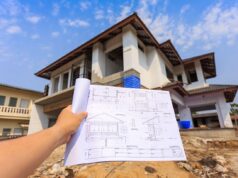“According to a survey, the AEC industry is expected to grow by $15.84 billion by the end of 2028.”
This growth has been attributed to the rising demand for real estate, urbanization, and more. As a result, massive construction projects are underway around the world involving large numbers of varied resources.
The large-scale resources involved in construction projects make it essential for companies to leverage the right resources to suitable opportunities to meet ever-evolving customer demands. Therefore, efficient resource management plays a pivotal role in the construction industry.
It enhances employee performance and productivity and enables the timely delivery of quality projects within budget. It also helps improve the brand reputation and maintain business profitability in the competitive market.
This blog explains how Saviom’s resource management solution can help efficiently manage the organization’s workforce.
Let’s begin.
What are the characteristics of the AEC sector?

AEC is the abbreviation of Architectural, Engineering, and Construction, which includes the collaboration of architects, engineers, and designers on construction-related work such as painting, concreting, carpentry, plumbing, cementing, electrical work, etc.
As an industry, they require diverse expertise to complete projects successfully and leverage large-scale human and non-human resources. Some of the critical resources in this sector are civil engineers, architects, designers, workers, supervisors, contractors, tools, equipment, etc.
In addition, the hiring patterns of the AEC firms are entirely different from other industries. Usually, they recruit temporary/contractual employees in a large volume who are paid on an hourly/daily basis to complete certain phases of the project.
Additionally, construction projects typically are time-consuming and have high budgets, and the project duration can last from months to years. Furthermore, external factors such as weather conditions, safety regulations, technological advancements, financial limitations, market volatility, etc., influence the different stages of the development process.
Now that we know the characteristics of the AEC sector let’s understand the steps to manage the resources across the projects.
7 ways to efficiently manage resources across the construction projects
Here are seven ways in which resource managers can effectively manage the workforce across multiple AEC projects-
1. Develop a centralized platform to consolidate AEC resource data
Most AEC firms still use traditional spreadsheets and home-grown tools that cannot provide real-time resource data and store the information in silos. Thus, managers find it time-consuming and laborious to reconcile this siloed data, leading to delayed decision-making. In addition, these tools are also prone to human error, resulting in wrong calculations, duplications, double data entries, etc.
Furthermore, a lack of visibility into the present and future bookings of resources and lead to double bookings, unnecessary hiring, etc. To prevent this, AEC firms can develop a centralized database to store all resource-related information, such as skills, competencies, availability, etc., to streamline scheduling and allocation. Thus, double bookings or resource overloading can be averted, reducing internal conflicts.
2. Forecast & bridge the capacity gap for pipeline construction projects
Resource capacity planning can help overcome skill shortages and eliminate last-minute hiring activities in the AEC industry that can cause budget or schedule overruns. Therefore, managers should identify future project requirements and analyze existing engineers’/workers’ availability ahead of time. This helps identify resource excess or shortfall in advance and take corrective measures to bridge the gap. If there is an excess of resources, the construction managers can bring forward the project timelines or sell the extra capacity.
Alternatively, in case of shortage, managers can implement various methods like out rotation and backfill strategies or plan Individual development programs (IDP). In addition, they can also conduct planned hiring of cost-effective global AEC employees. These measures can help construction managers bridge the capacity vs. demand gap and ensure the efficient utilization of resources.
3. Allocate competent AEC resources to construction projects

The availability of skilled AEC resources, such as engineers, electricians, architects, laborers, etc., at the right time and cost, is crucial for successful construction project delivery. The construction manager should identify AEC resources with skills that match the labor requirements once they receive a request for workers.
To accomplish this, they can analyze various resource attributes such as locations, availability, competencies, schedules, cost rate, etc., and then allocate the best-fit engineers/architects to projects. Conversely, for equipment, materials, tools, etc., managers should determine the different specifications before assigning them. Thus, it ensures uniform workforce distribution, enhancing productivity and engagement.
4. Ensure productive utilization of AEC resources
Under/overutilization of resources negatively impacts workforce performance and productivity. For example, when civil engineer has to complete tasks beyond their capacity, it leads to burnout due to excessive stress. Similarly, underutilized employees exhibit disengagement as they cannot explore their true potential.
Therefore, managers must track their utilization levels and ensure that they are optimally utilized. For this, managers can identify underutilized or overutilized engineers and adjust their schedules based on these data. Additionally, they can mobilize them from non-billable or less-priority to billable or high-priority work and enhance productivity.
5. Manage ramp-down activities of AEC projects effectively
The majority of AEC projects experience frequent ramp-up and ramp-down activities. For example, the AEC firm requires thousands of workers to complete the project during the construction phase. However, once the project approaches the closure phase, there is a massive ramp-down, and resources such as construction laborers and civil engineers end up on the bench.
However, it can negatively impact profitability since benched resources do not bring revenue to the organization. Thus, managers should take measures proactively to reduce the bench size. For this, managers can foresee resources that will end up on the bench and assign suitable work based on their skills, facilitating enhanced productivity and high performance.
6. Create a balanced mix of permanent and contingent AEC workforce

The right combination of permanent and on-demand resources can help AEC firms prevent last-minute firefighting and minimize costly hiring-firing cycles. For this, the construction managers can check the nature of the skillset required for a project along with the budget. This will help them determine whether the skill demand is a short-term or long-term requirement.
Depending on that, they can hire a permanent or on-demand AEC workforce. For example, a construction firm gets a short-term project of remodeling a one-bedroom apartment. Here, managers can hire temporary workers and complete the project within the stipulated time and budget. However, AEC firms can recruit a permanent workforce for a long-term project like dam construction and complete the task. This will keep resourcing costs in check and helps eliminate unnecessary hiring/firing cycles.
7. Facilitate training programs to upskill AEC resources
The rapid technological evolution in the construction sector has led to the widening of skill gaps and obsolescence among the construction workforce. To bridge this, construction managers can develop an IDP and facilitate various upskilling programs, on-the-job training, conferences, etc. This will allow the workforce to diversify their portfolio and improve their billability.
Moreover, it will help employees expand their skill sets, enhancing their performance and productivity in the workplace. For instance, an organization must ensure that its employees are equipped with modern skills such as SketchUp, FLAC 3D, Autodesk, etc. This enables construction employees to perform their jobs precisely and achieve success.
Now that we know the steps let’s look at how resource management software can assist.
How can an advanced resource management tool help?

Saviom’s advanced resource management software enables managers to create an effective resource plan and manage the workforce efficiently.
The tool offers a bird’s eye view of all resources and their attributes, such as skills, experience, capacity, availability, etc. This allows construction managers to find the best-suited architects and engineers with the right skills for multiple projects.
Further, the tool’s forecasting capabilities and capacity-vs-demand report help foresee the skill gaps by leveraging appropriate internal and external channels. It, thus, reduces the last-minute and high-cost resourcing hassle.
Additionally, it provides people-on-the-bench and project vacancy reports that allow the team leads to manage the bench effectively by promptly assigning suitable tasks to the workforce before they hit the bench. This method ensures the employees are engaged and their productivity is high at all times.
Moreover, supervisors can understand how resources are utilized using the utilization reports generated by the tool. In the case of over/underutilization, supervisors can implement various optimization techniques to streamline workloads. This will increase the resource health index.
The Bottom Line
Managing construction projects according to client expectations is a challenging task. However, with the points mentioned above coupled with the right resource management software, managers can effectively overcome various resource-centric challenges by considering every facet of a project. Furthermore, it will enable them to formulate the right resource plan well in advance and ensure the project’s success.
So, are you prepared to manage the workforce of your firm efficiently?















